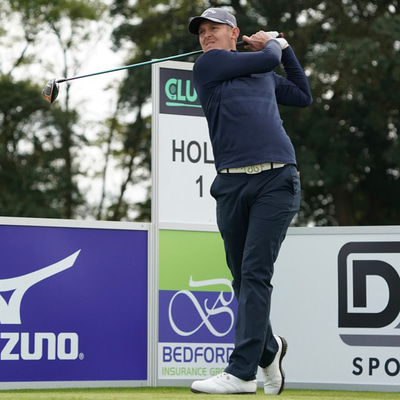- OT
- Life in practice
- Practitioner stories
- “No one can say they have completed the game of golf”
My vision
“No one can say they have completed the game of golf”
Golfer George Woolgar on the artistry of shot making, keratoconus and the constant quest for improvement

George Woolgar
17 September 2022
This year is my first year back playing golf full-time. I picked up a tropical disease in 2016, which took about a year and a half to get treated, then I injured my wrist while playing in a tournament in Egypt. For three years, it was stop and start, then COVID-19 hit in 2020.
I imagine there would be quite a few people in my situation who would want to hang their boots up. I am 35 now so I am not a spring chicken anymore but the benefit of golf is that you can remain competitive as you get older.

I was around four when I started playing golf. My dad and my grandad played golf. Now my four-year-old son has a little club from his grandparents. My dad is a big role model for me. Regardless of whether things go well or badly, he is always there. Support is a massive thing.
Golf is a whole package – mental and physical. You can’t have any weaknesses. If you do, then you just get left behind. At a normal golf tournament, you’re playing against around 150 people but you can’t control what they are doing. You can control your actions. People break under pressure but you have to stay within yourself and play the golf course.
I found out that I had keratoconus when I went to the optometrist [Hakim Group practice Daybell & Choo] in Chesterfield when I was 20. I noticed my eyesight was getting really blurry. From the start, it was quite difficult to find a lens to fit. After a while, my optometrist found these Synergeyes lenses and I have never looked back. The comfort and the durability of the lenses is key.
Some days you can play absolutely fantastically – you feel like your hand eye co-ordination is perfect, everything goes right, and then the next day you are a completely different animal
Golf is a high performance, sensitive game. Your eyes have a massive demand on them. It is a stationary ball and teeing off happens very quickly – 0.08 seconds. The ball can travel at a speed of 175 miles per hour. There are changes in light and weather. You have different grasses with completely different grains. The artistry of shot-making is important; using your putter as a brush to paint a line. When you tee off, you are painting a line in the sky.
Your vision has to be so sharp because it is the difference between winning and losing. You only get one shot. It’s not a team sport where you have other people to look after you. You have one go and if that is not good enough you go home.
You’re learning every day with golf. One of my old coaches said, ‘The day you stop learning, is the day you give up.’ It is a unique sport. No one can say they have completed the game of golf.
George Woolgar, from Chesterfield, is a tournament golf professional and three-time winner of the PGA EuroPro Tour. He wears SynergEyes contact lenses after being diagnosed with keratoconus in his early 20s.
- As told to Selina Powell.

Comments (0)
You must be logged in to join the discussion. Log in